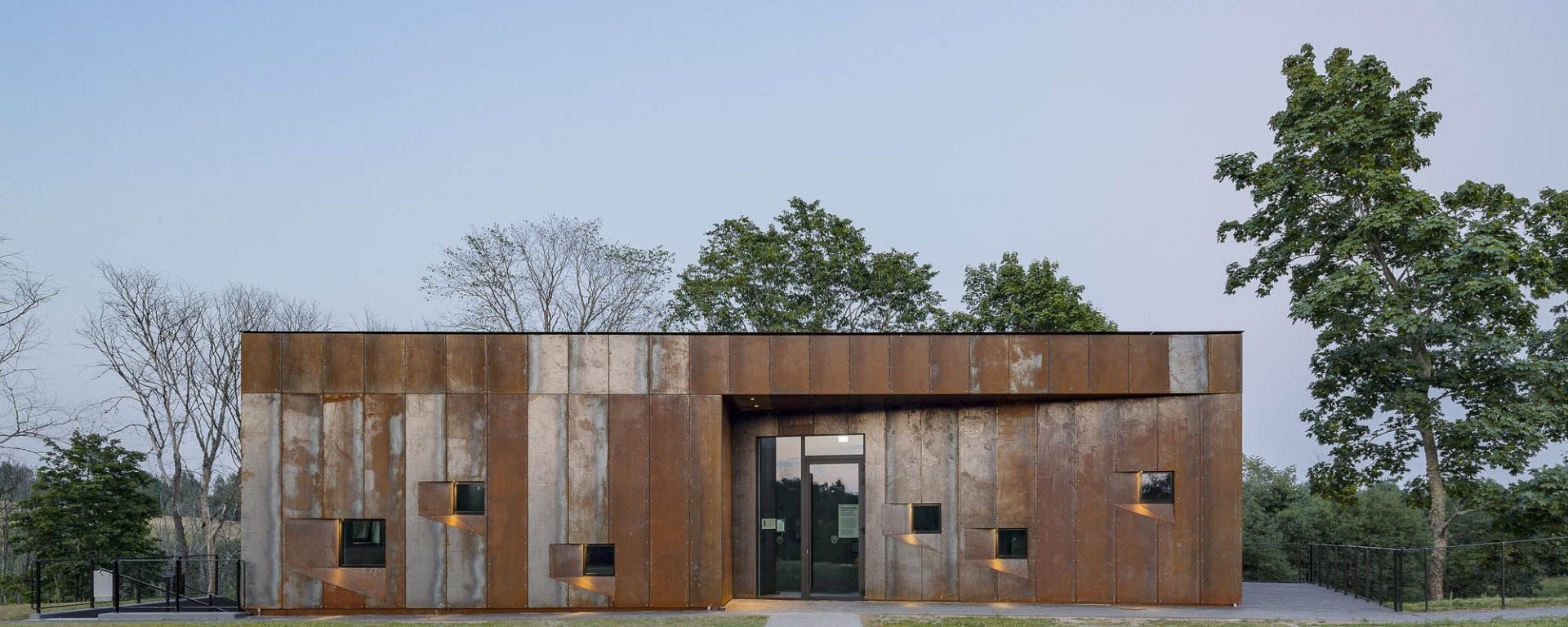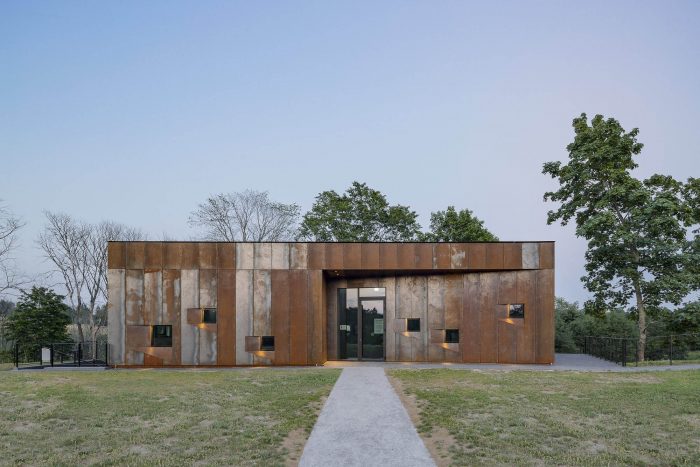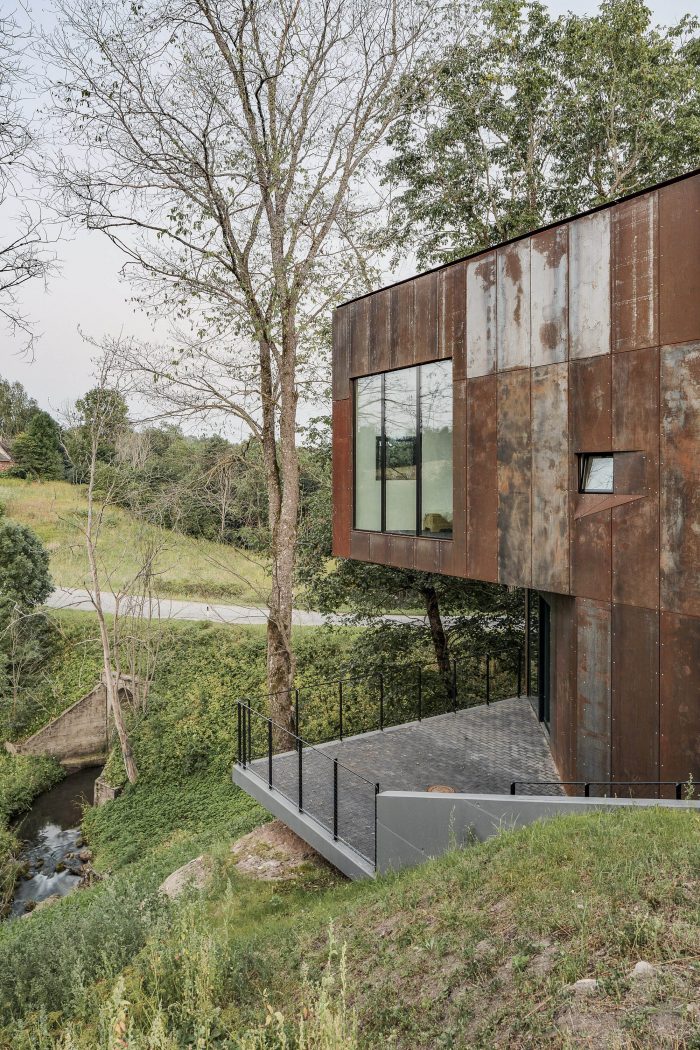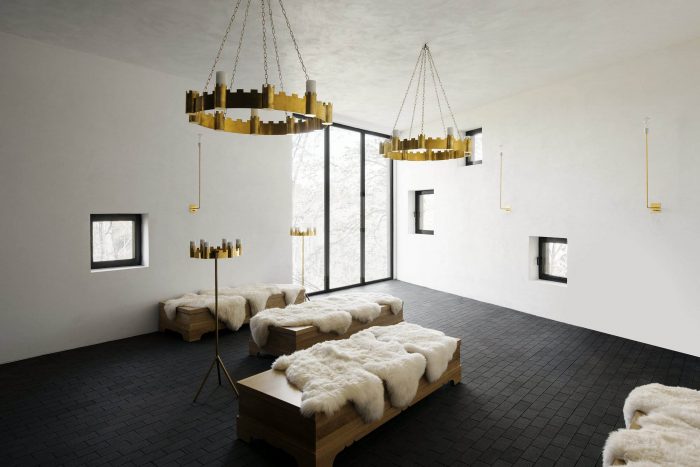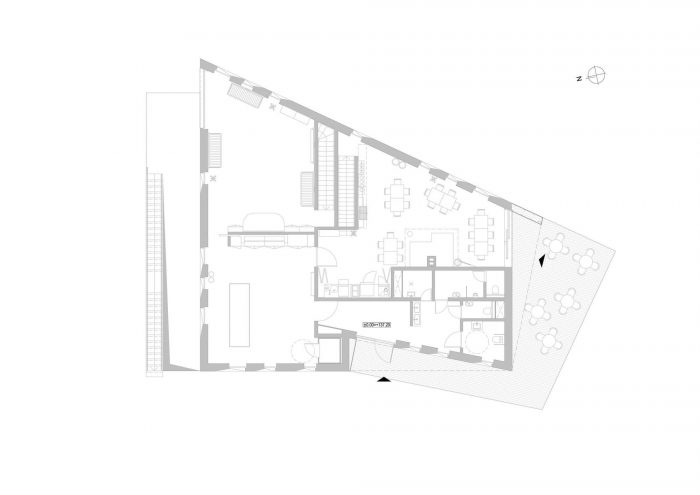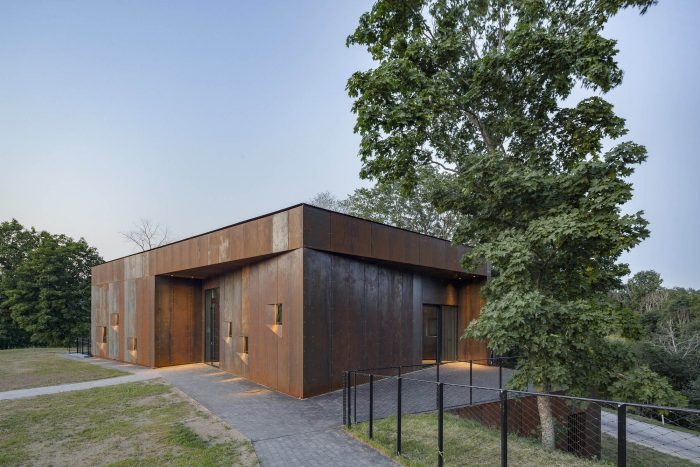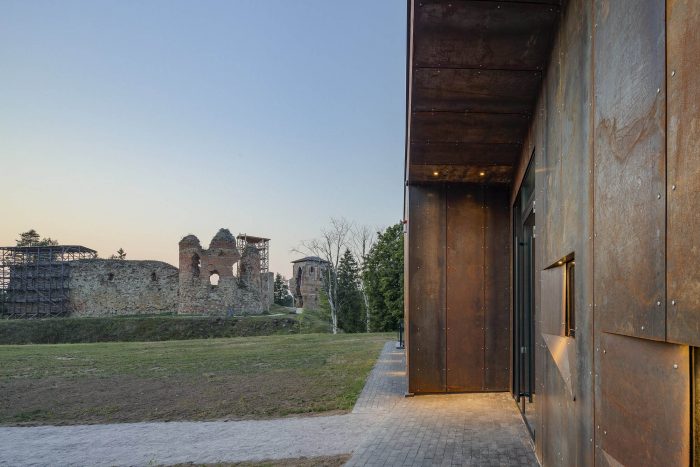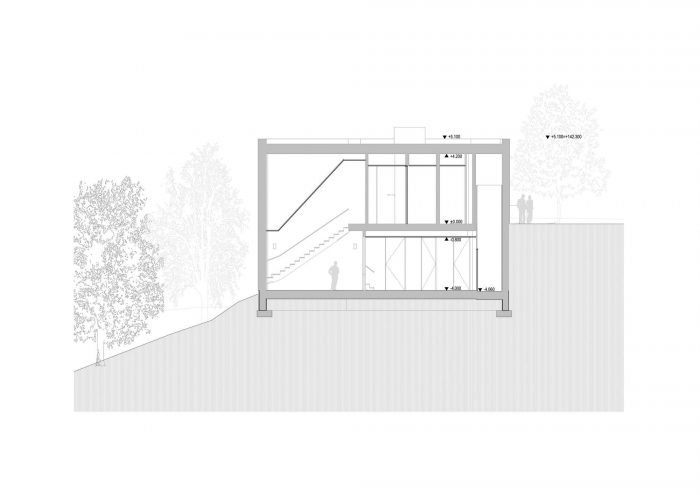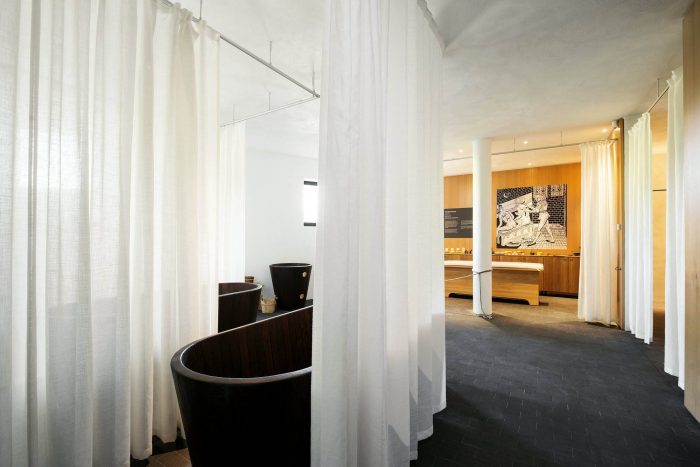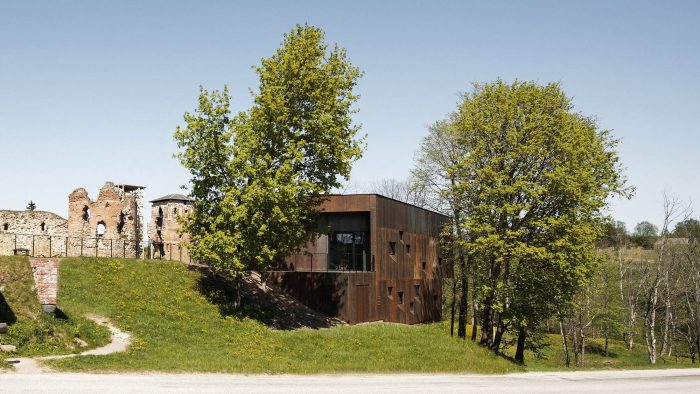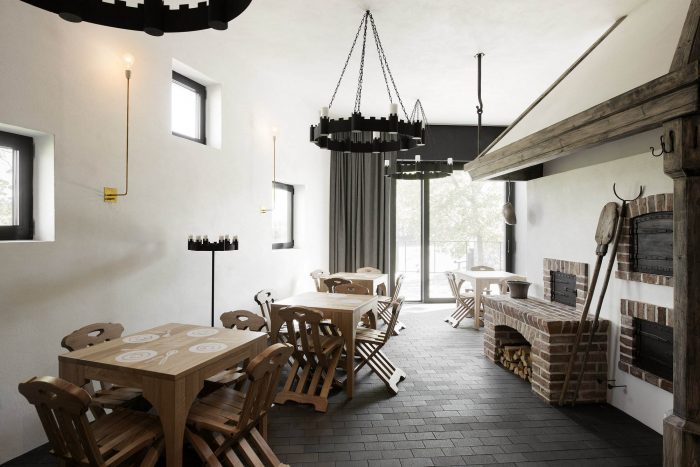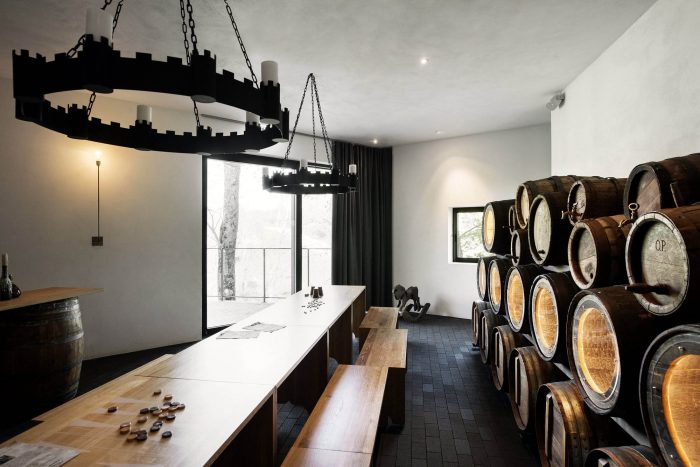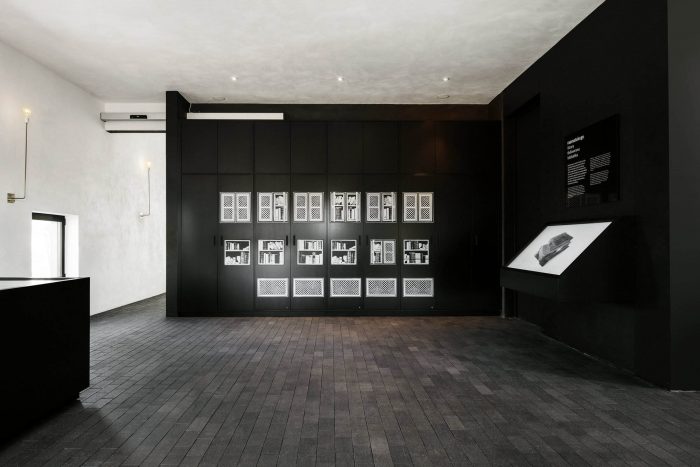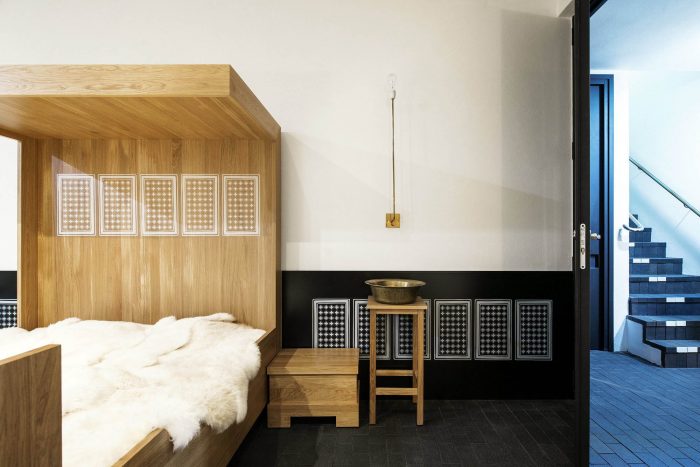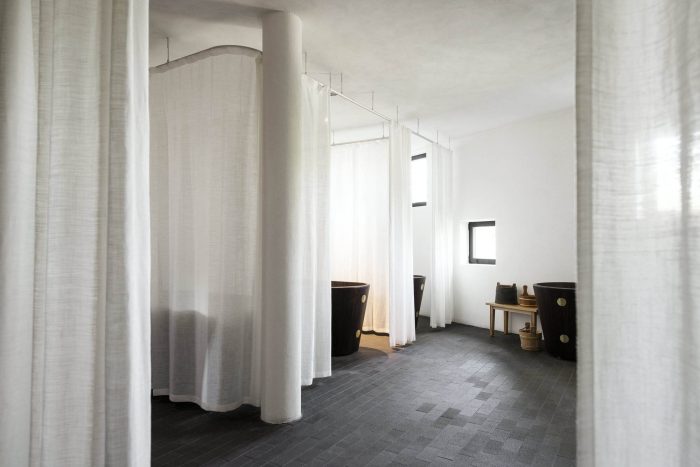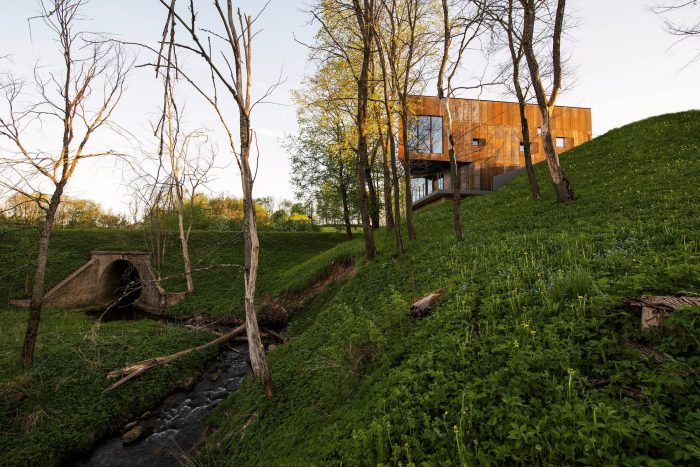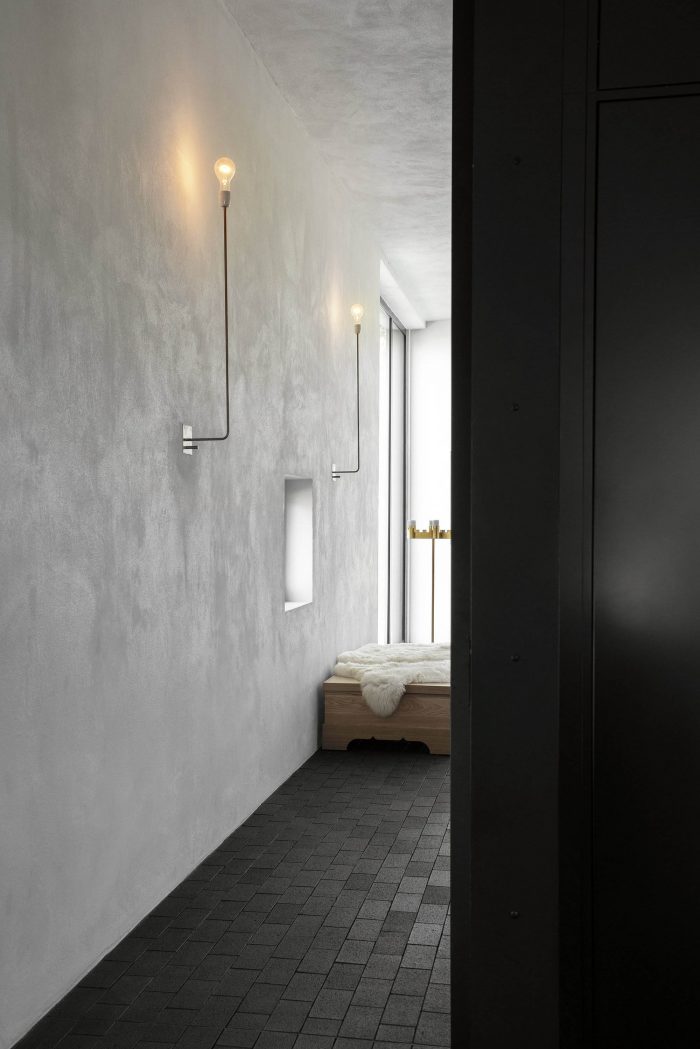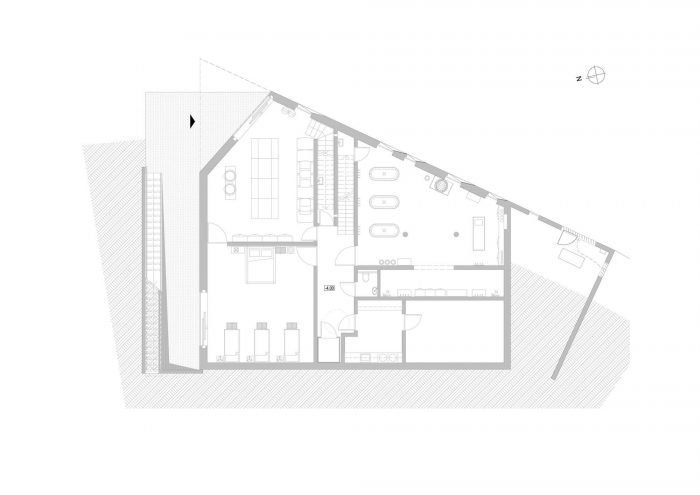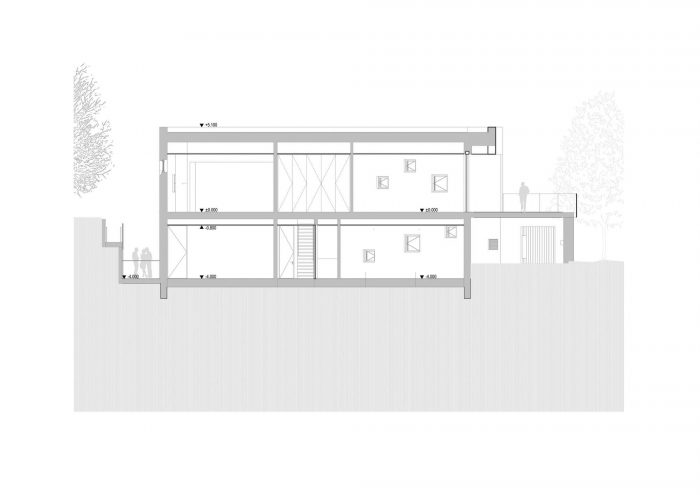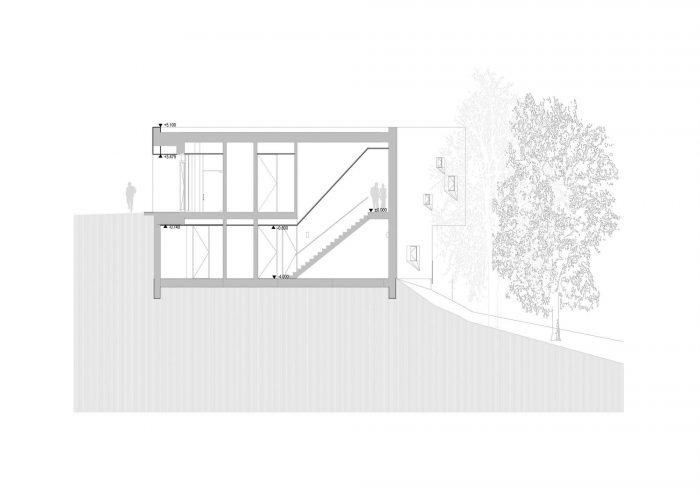建筑师萨米-林塔拉这样描述朝圣者之家。’通过它走近时在景观中的表现,以及从里面看到的周围的景色,感觉这个建筑非常完整。从位置到细节,从衣架到展览的技术解决方案,所有元素似乎都很好地结合在一起。它是对中世纪环境的成功抽象,而不是浪漫,或者至少是过度的浪漫。我们可以看到什么是新的,什么是以一种聪明和平衡的方式代表旧的。这是一座给人留下非常积极印象的建筑’。
Architect Sami Rintala described the Pilgrims’ House as follows: ‘The building feels very integral by how it appears in the landscape when it is approached and by the view of the surroundings as seen from the inside. From the location to the details, from the clothes racks to the technological solutions of the exhibition, all elements seem to work together nicely. It is a successful abstraction of the medieval setting, without being romantic, or at least overly romantic. We can see what is new and what represents the old in a smart and balanced way. It is a building that left a very positive impression.’
在爱沙尼亚东南部,旅行者登上由皮乌萨河和米克西河雕琢而成的古老冰川谷地的陡峭山坡,将到达一个建筑群,包括14世纪的城堡遗址、一个古老的酒馆和现代的朝圣者之家。瓦斯特里纳的主教城堡是一个充满历史气息的场所。
In south-eastern Estonia, a traveller ascending the steepish slopes of the ancient glacial valleys carved by the Piusa river and Meeksi stream will reach a complex of buildings including the ruins of a 14th-century castle, an old pub house and the modern Pilgrims’ House. The Episcopal Castle in Vastseliina is a venue imbued with history.
据报道,1353年在这里发生了一个奇迹后,这个城堡建筑群曾经是一个受欢迎的朝圣地,现在已经恢复为一个体验中心,展示中世纪的生活模式。由KAOS建筑事务所设计的朝圣者之家于2018年完工,是城堡建筑群的最新补充。
The castle complex, which used to be a popular pilgrimage destination after a miracle was reported to have occurred there in 1353, has now been revived as an experience centre to exhibit the medieval mode of living. The Pilgrims’ House by KAOS Architects was completed in 2018 as a recent addition to the castle ensemble.
朝圣者之家 “的概念是由历史位置、如画的风景和朝圣的冥想境界塑造的。房子被嵌套在斜坡上,其设计是为了避免阻挡城堡剩下的视野。现代化的建筑虽然尊重旧有的建筑,但在夏季仍有部分被绿色植物掩盖,远离城堡遗迹,向山谷中的溪流凸出。
The concept of the Pilgrims’ House has been shaped by the historic location, the picturesque scenery and the meditative realm of pilgrimage. The house has been nested onto the slope and designed so as to avoid blocking the view of what is left of the castle. The modern building is distinguishable though respectful to the old and remains partly veiled by the greenery during the summer period, reaching away from the castle ruins and jutting out towards the stream in the valley.
对于高斯建筑事务所来说,这座建筑是对建筑愿景的一次朝圣,在模仿历史氛围和回应现代惯例之间取得了微妙的平衡。这导致了概念上的中世纪风格,具有高大的房间和门,似乎是壁画的楼梯和秘密的壁龛,砖地板和抹灰的内墙。大部分盲墙上的小窗孔在这里和那里,让人联想到早期的城堡,提供了风景,其中最好的是被大窗框住。朝圣者之家的红棕色风化钢结构旨在与城堡遗址的红砖和花岗岩相呼应。
For KAOS Architects, this building was a pilgrimage to an architectural vision delicately balanced between imitating the historical atmosphere and responding to modern conventions. This has resulted in a notionally medieval touch, featuring high rooms and doors, seemingly mural stairs and secret niches, brick floors and plastered interior walls. The small window apertures here and there in the mostly blind walls, reminiscent of early castles, offer scenic views, the finest of which are framed by larger windows. The reddish brown weathering steel fabric of the Pilgrims’ House is aimed at toning in with the red brick and granite of the castle ruins.
总体的单色美学让古老和现代相互融合,突出了中世纪打扮的人员、食物和饮料。在墙壁上,从古老的雕刻中获得灵感的黑白图形成为中世纪世界的窗口。
The general monochrome aesthetics let the old and the modern blend into each other, highlighting the medievally dressed personnel, foods and drinks. On the walls, black-and-white graphics inspired by old engravings serve as windows into the medieval world.
因此,朝圣者之家提供了一个了解中世纪生活的机会,一个自我反思的机会,以及一个审美印象。
Thus, the Pilgrims’ House offers a look into medieval life, an opportunity for self-reflection as well as an aesthetic impression.
Architects: KAOS Architects
Area: 420 m²
Year: 2018
Photographs: Maris Tomba, Terje Ugandi
Manufacturers: Barthelme, Saint-Gobain, Viabizzuno, Wienerberger, KHIS, Riksen
City: VANA-VASTSELIINA
Country: Estonia

